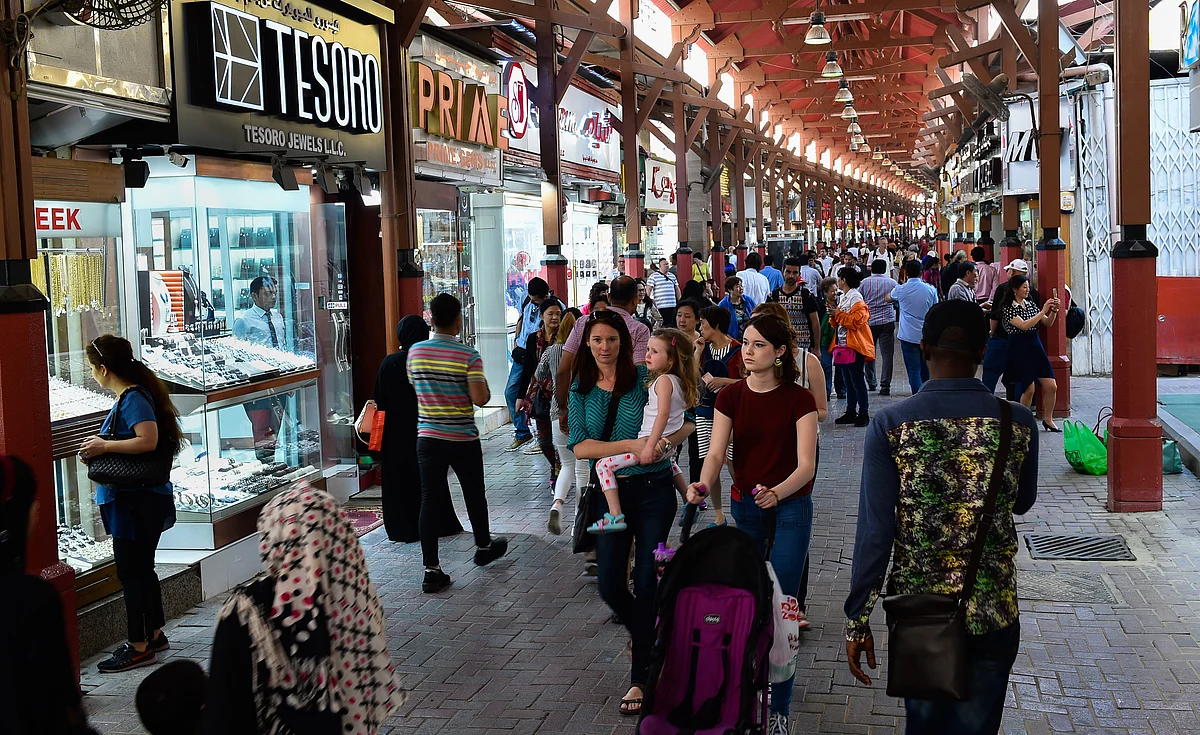Discover UAE heritage on an abra: A trip to Old Dubai
Old Dubai is not just a marvel of contemporary architecture, it is a place with a soul

Dubai: When people think of Dubai, the image that often comes to mind is a skyline pierced by gleaming skyscrapers — symbols of ambition, progress, and a futuristic vision. The city is globally recognised for its luxury, innovation, and modernity. Yet beyond the spectacle of steel and glass lies a deeper, richer story — one rooted in heritage, tradition, and resilience.
Video: Sheikh Hamdan takes traditional abra ride to visit historic Dubai Souk on Eid Al Adha weekend
Old Dubai is not just a marvel of contemporary architecture; it is a city with a soul. While landmarks like the Burj Khalifa, Palm Jumeirah, Dubai Mall, and Mall of the Emirates reflect bold aspirations, the true essence of Dubai lives in its historical districts, traditional souks, and the enduring spirit of trade that once defined the city.
Too often, Dubai’s heritage is overshadowed by its rapid growth. But its past is essential to understanding its identity. Historic areas and old markets tell the story of a humble trading post’s transformation into a global metropolis. Among these, the traditional souks stand out for their authenticity — echoes of the merchants, craftsmen, and communities who shaped the city's legacy.
Deira Old Souk Abra Station
One of the most vivid symbols of Dubai’s living heritage is the Deira Old Souk Abra Station. Situated along the historic Dubai Creek, this station is more than just a transit point — it’s a link to a time when wooden abras ferried passengers between Deira and Bur Dubai, long before supercars and autonomous trains became fixtures of the city.
A ride across the Creek in an abra is more than transportation — it’s a journey through time. Once the primary way to cross the Creek, these wooden boats carried merchants, laborers, and residents, enabling commerce and connection between communities. Despite Dubai’s relentless modern expansion, abras remain a vital part of the public transport system, still gliding across the water with quiet dignity. The Deira Old Souk Abra Station remains one of the busiest in the city, connecting to the Bur Dubai station near the historic Textile Souk and Al Fahidi Historical District.
More than a terminal, the station is a gateway into Dubai’s cultural heart — a symbol of its evolution from a modest port to a global metropolis, bridging past and present.
Deira Old Souk
Deira Old Souk is among the city’s most vibrant and historic marketplaces, a trading hub that has pulsed with energy for generations. It’s divided into two main sections, each offering a distinct cultural experience.
The first is the Spice Souk, a sensory treasure nestled in one of Dubai’s oldest neighborhoods. A maze of alleyways leads past shops filled with sacks and jars of vivid spices, herbs, dried fruits, and exotic seasonings. The air is rich with the aromas of saffron, cinnamon, cloves, cardamom, and more — a powerful reminder of Dubai’s trading roots.
The second is the Gold Souk — perhaps Dubai’s most iconic market. Home to over 300 jewelry shops, it exemplifies the city’s legacy as a global hub for gold and gemstones. From finely crafted bangles to diamond-studded ornaments, it’s a showcase of craftsmanship and opulence that earned Dubai its nickname: the “City of Gold.”
In a city celebrated for its cutting-edge skyline and unrelenting ambition, the abras and old souks offer a rare, enduring glimpse into Dubai’s soul. They are not relics — they are living traditions that still shape daily life.
Video by Arnav Narula, Intern with Gulf News
Sign up for the Daily Briefing
Get the latest news and updates straight to your inbox
Network Links
GN StoreDownload our app
© Al Nisr Publishing LLC 2026. All rights reserved.